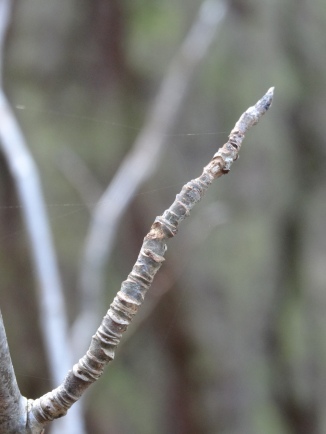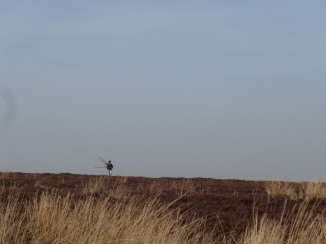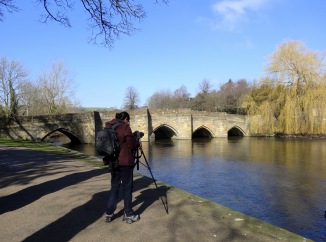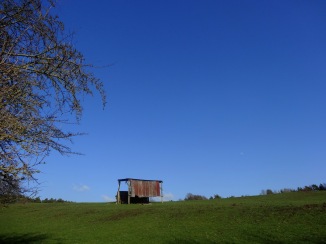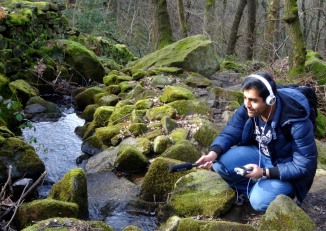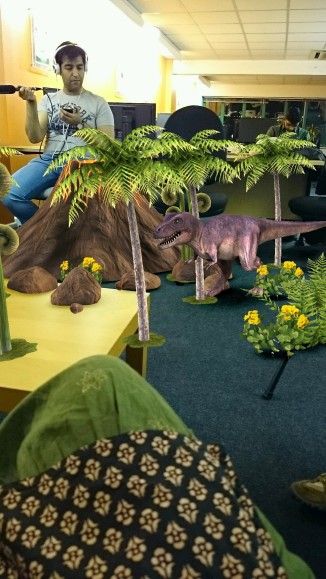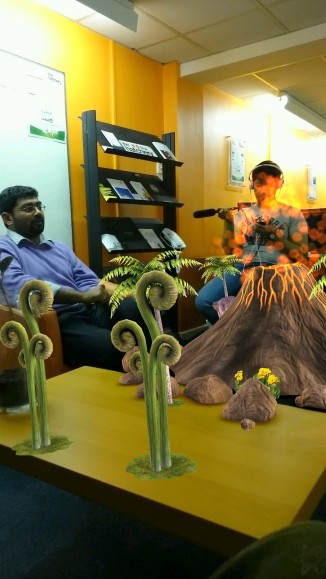




Part I
Helen Skelton: This beautiful landscape provides quiet sanctuary from the hustle and bustle of the towns and cities that flank it.
A third of Sheffield is actually in the Peak District, which makes it the only UK city to have a National Park within its boundaries.
[music]


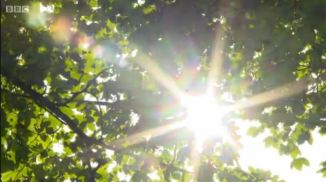


Chamu Kuppuswamy: I do a walk called Elephant in the Park walk.
HS: right
Chamu Kuppuswamy: This year it is on the 2nd of August.
HS: When Chamu Kuppuswamy first moved to Sheffield she began looking for connections between the Peak District and the country of her birth, India. What were your first impressions of the Peak District then?
CK: oh, one of..wonderful countryside and I thought it was very very quiet, compared to cities I have lived in India, of course.
HS: And what about you in terms of your friends, your family and your culture – why did you think it was so important to find links with India?
CK: In some of these places kind of my memory was jogged of.. you know.. about having read something about India about this place. That kind of said well actually there must be a lot of different links that will be really interesting to find out in which case I can have my own sort of global interpretation of the National Park and that really sparked the whole thing off.
[music]
HS: One of the most exciting links that Chamu found was here in Millthorpe.

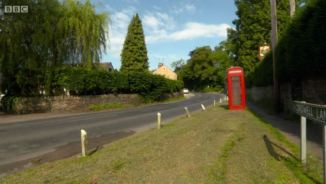
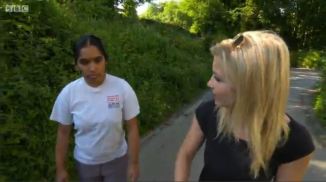
Edward Carpenter was one of the village’s former residents. Socialist, poet and philosopher, he had a fascination for Hinduism that led him on a life changing journey to India. So he was sort of a pioneer in that he went to India, he liked what he found about Hinduism and he brought it back here.
CK: Absolutely. He went to India because of all that he had heard about India. And he also visited a guru over there. So he really strengthened his knowledge of Hinduism.

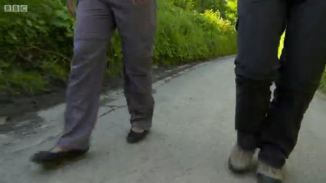

[music]
HS: This is Carpenter’s former home in Millthorpe, where I am meeting Helen Smith. Fascinated by the life of Edward Carpenter, also known as the Saint in Sandals, she’s researched his life extensively for her Phd.
[music]
HS: Helen, these look intriguing! Tell me about these.


Helen Smith: They are, I think. I think people would have been very surprised when these appeared in this area in the 1890s. These sandals actually represent sort of Edward Carpenter’s relationship to India, and the things that he liked about India, things that he brought back from India. These sandlas representative of something that was freedom for him, freedom in terms of dress, and also the freedom of understanding that he found in India and brought back over to the Peaks with him.
HS: And this is something that people wanted him to sort of spread the word about.
HeSm: Yes, absolutely.
HS: I believe this is a letter from Gandhi.

HeSm: It is, yes. A little bit later on Carpenter had been working into the early 20th century trying to spread these ideas. And that brought him to the attention of Gandhi and Gandhi’s circle. And Gandhi was very keen to write to Carpenter to ask him to sort of take his ideas out into Gandhi’s wider circle. And to spread the word even more. So that highlights its importance really, in sort of things like the Indian independence movement as well.
[Indian music]
HS: Carpenter’s connection to India flourished on his return home. His walks in the Peak District were now further inspired by ideas of Hinduism and soon it influenced his writing.
[Indian music background] [voice] You are not to differentiate yourself from nature. It is only under such conditions that the little mortal creature becomes gradually aware of what he is.


HS: But there is an even more colourful local character who brought these two cultures even closer together. Thomas Wardle was a silk dyer.

From 5000 miles away in the Peak District he made a breakthrough that changed the livelihood of Indian silk dyers bringing new vibrancy to previously near worthless fabric.
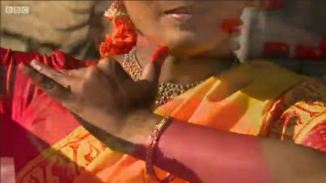

As expert dyer Glen is hoping to show us.
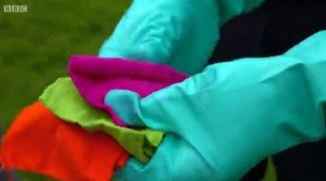

G: The fabric when it first come to him, it weren’t useful. When the silk is woven it goes through with gum so it doesn’t break.
HS: So when you say there was gum on it, they put that on to strengthen it?
G: strengthen it, so they could weave it
HS: So he found a way to get that gum off it and that it could take dye?
G: yeah, yeah. And what he did was he prepared the fabric with soap, alkali and then bleached the fabric, then he could get the range of shades he wanted to get like pink, lighter shades of blue and so on. If it wasn’t, we would be looking at dark greys, or browns or blacks or
HS: So initially people were looking at Indian tussur silk and saying, that is useless, that’s no good to me. And Thomas Wardle said.. ahn.ha..we can make this work.
G: Well, what he did was pretty remarkable really
HS: So Thomas Wardle has left a legacy among silk dyers, has he left a legacy in India?
CK: I think he absolutely has. He gave the Indian silk industry their new market , which is there were more and more people now who were interested in tussur silk.
HS: And Wardle found another use for tussur silk, producing a fabric called seal cloth, which became a huge success when used to make waterproofs. And where would the Peak District be without them?
Absolutely no need for waterproofs today. But what about the rest of the week – Countryfile Weather Forecast.
Part II
Rugged moorlands, picturesque dales, the Peak District was Britain’s first National Park.
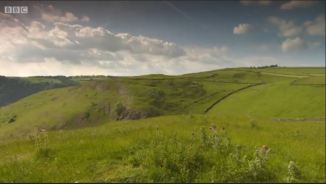
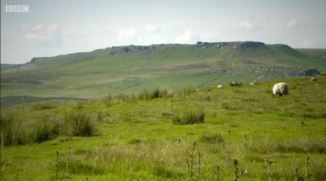
And one of our most accessible. Around 20 million people live within just an hour’s drive. 10 million people visit the Peak District each year. And it is surrounded by diverse northern towns and cities. But 1% of the people who come here are from ethnic minorities.
Earlier we met Chamu Kuppuswamy, she has discovered some surprising connections between the peaks and her native, India. In an area synonymous with the right to roam movement back in the 1930s, Chamu is at the forefront of a new kind of campaign – encouraging people from ethnic minorities to get out and enjoy what the area has to offer.

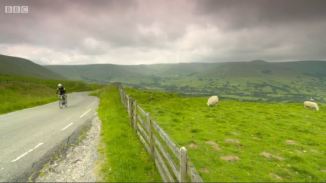
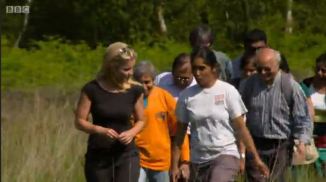


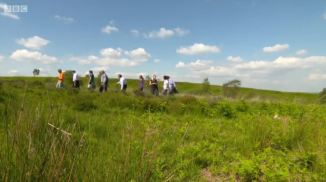
CK: This place is just amazing in terms of being actually able to walk in it, and actually get anywhere you want, and with the help of a map you are able to explore so much of the countryside, which for me was unprecedented.
HS: So walking and rambling isn’t something that you would have done in India?
CK: No, certainly not. I mean, we do a lot of walking but in cities, but nothing like in the countryside. The countryside is really offlimits. And there’s lots of dangers, hazards, and also there isn’t a map you could use. Therefore it is not somewhere you would naturally do to go for a walk.
HS: What do you think is stopping people from ethnic minorities coming out and enjoying the Peak District?
CK: A number of different factors. Information about the fact that there is access, and there is the right to roam in this area is one of the least known bits of information, I think, because National parks are looked at more as conservation areas, where people don’t actually inhabit. Because that’s the kind of Parks people encounter in India.
HS: So why do you think it is important for people to come out here?
CK: oh! I think, for anyone to come out into nature is really really great. I think you can experience the sort of tranquillity, and experience the sort of pleasure that you can’t get from any other activity.



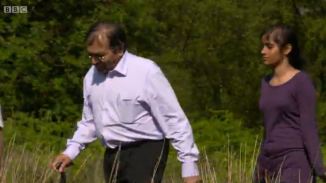




[music]
HS: Once she was out and about, Chamu couldn’t get enough. You trained to be a ranger yourself. What do your parents back in India think of this strange sort of hobby of yours?
CK: First of all, they asked me- Is it safe? You know, if you go, do you actually patrol on your own?
Chamu’s regular walks reveal the links with her Indian heritage and are a great way of getting more people from ethnic minorities into the Peak District.
Debjani: I love cities, that on a nice day like this, I can be out in the Peak District.

Vithal Patel: My principle is the world is my school, and nature is my book. You learn lot of things from the nature really, lot of understanding through the nature.

Pragya: I guess I like everything about the Peak District. Its green, its peaceful, its calm and I am like pretty much into the flora. Everything I come here I find something new to look at.


[music]
HS: There is no end to Chamu’s passion for this area. Researching links with India, becoming a ranger, leading walks, and one more thing – dancing.

These ruins of a house from 500 years ago provide the perfect stage for Chamu’s performance.
Annapoorna Kuppuswamy sings – Sarasi jaakshulu jhalakha made ..with dancers bells sounding
HS: Chamu has written, choreographed and is now performing this dance, inspired by nature and her connection with the Peak District.
AK sings: Sarigha cheerulu mela
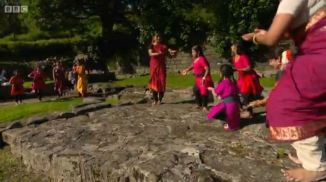
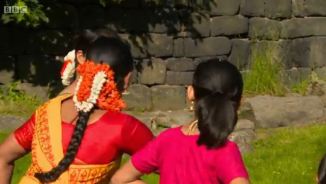
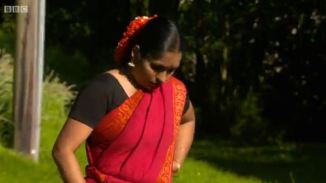













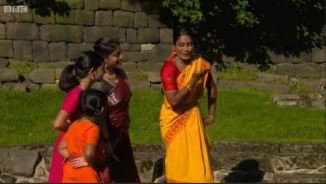

CK: the techniques are replete with inspiration from nature. This is the sort of first ever time we have actually done it together as a group outside. It is absolute fascinating, just walking up on the grass and feeling the stone over there, is a completely different experience to sort of being in a classroom where the surface is very different.
AK sings: ..tharuvu neekita
HS (whispering): I am going to going on a limb here, but I am pretty sure that this is the first time we have done Bharathanatyam, Indian dancing in the National Park on Countryfile. I think Tom Heap should do all his reports like this from now on!
AK sings: Sarasi jaakshulu…
With moves like this, it’s no wonder word seems to have gone around!



 AK sings: tharuvu neekita joothus chuntuta dharma ..aaa…aaa.
AK sings: tharuvu neekita joothus chuntuta dharma ..aaa…aaa.
Claps..
HS: From the John Craven School of Dancing.
John Craven: laughs
HS: That was impressive. Thank you. What a fantastic way of ending the show.
JC: It was wonderful, wasn’t it?



Transcribed by Chamu Kuppuswamy








































































